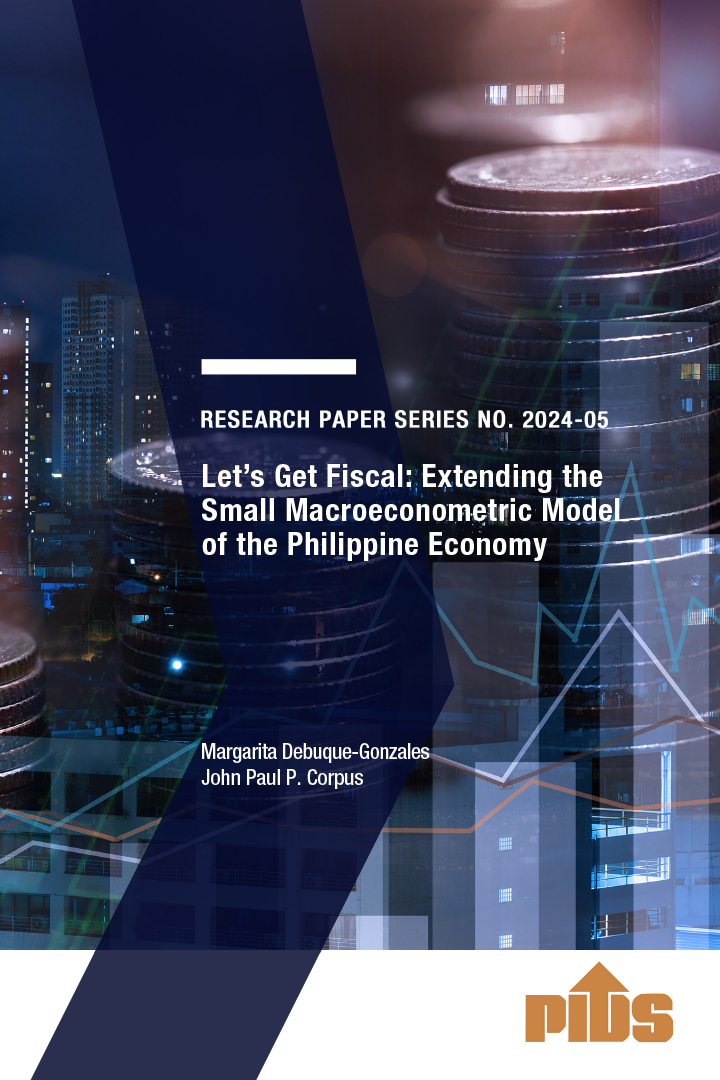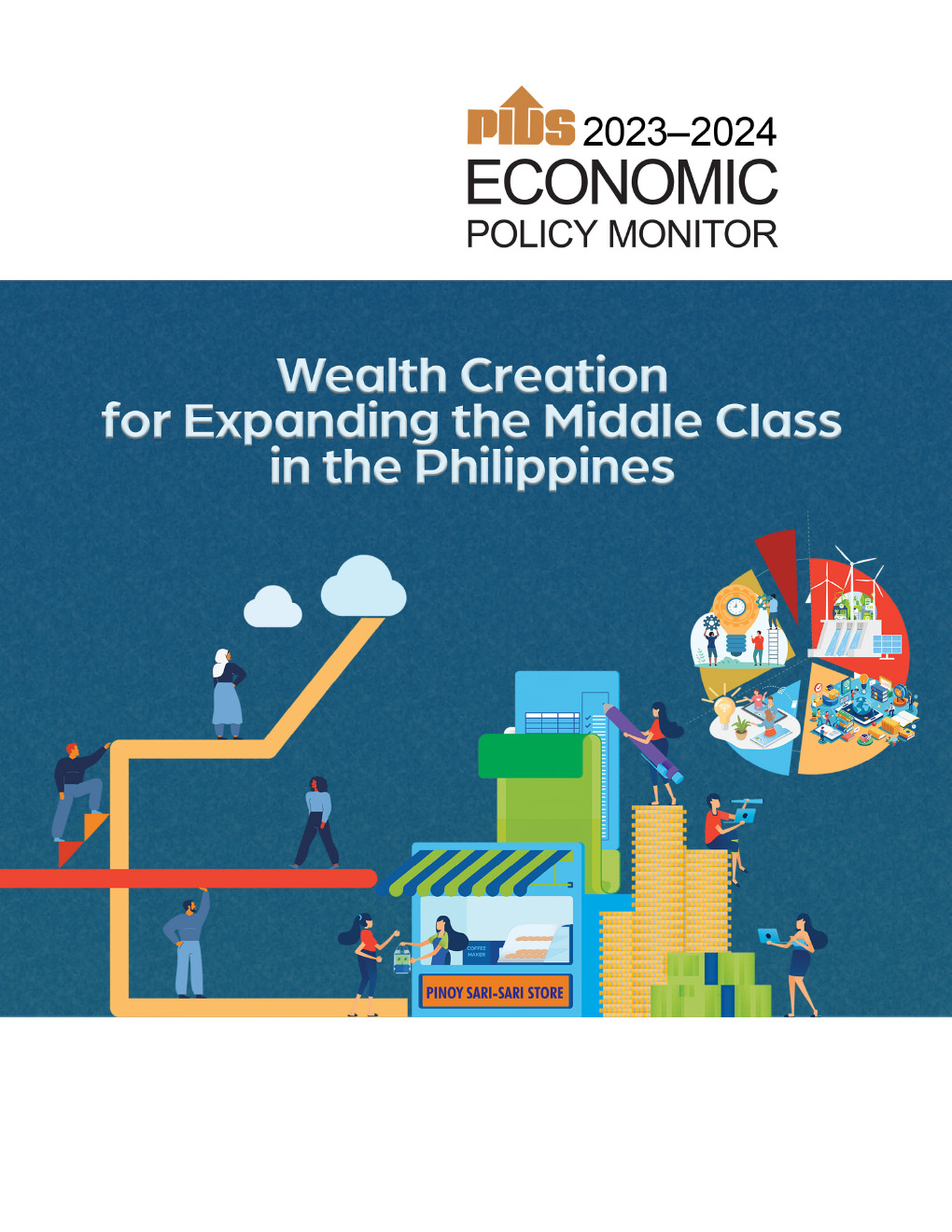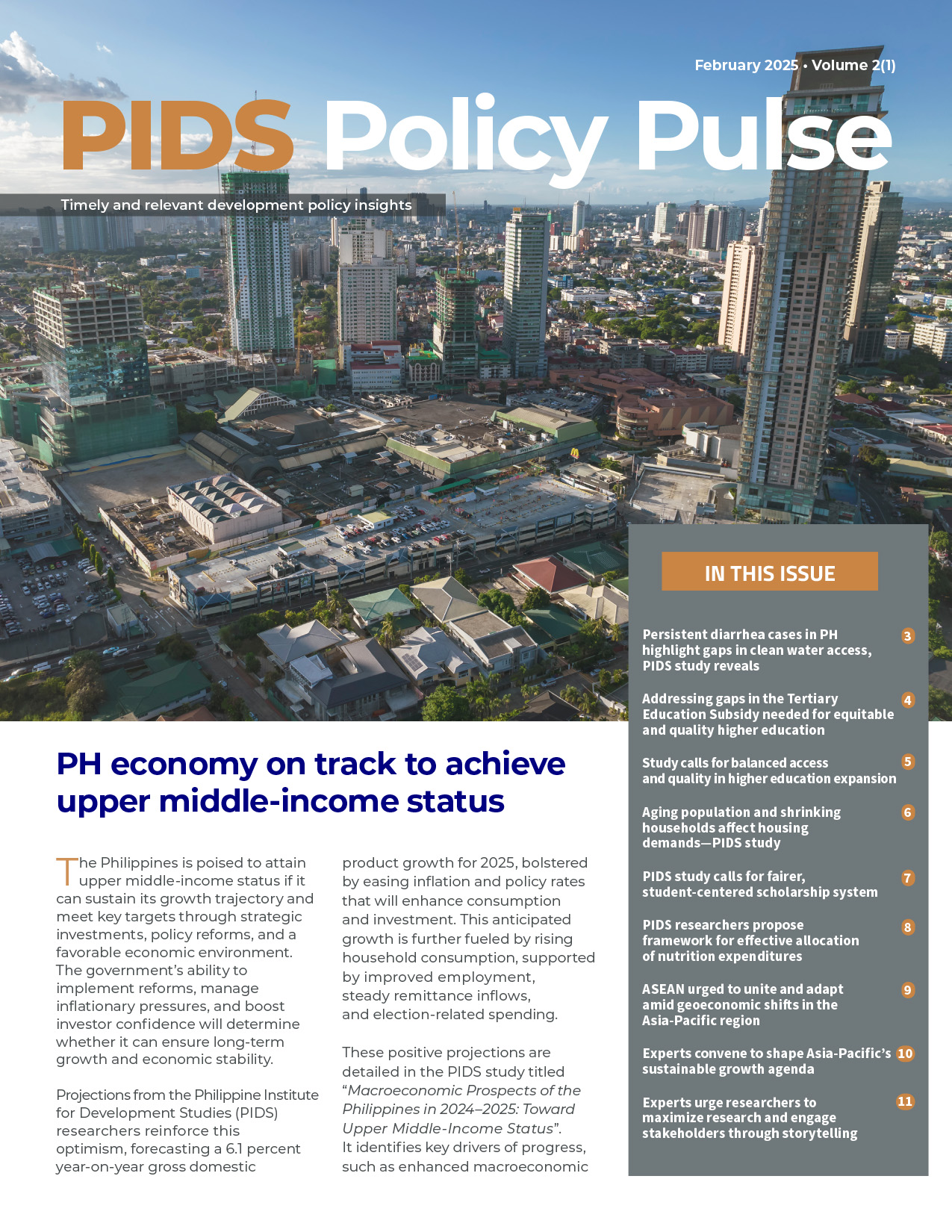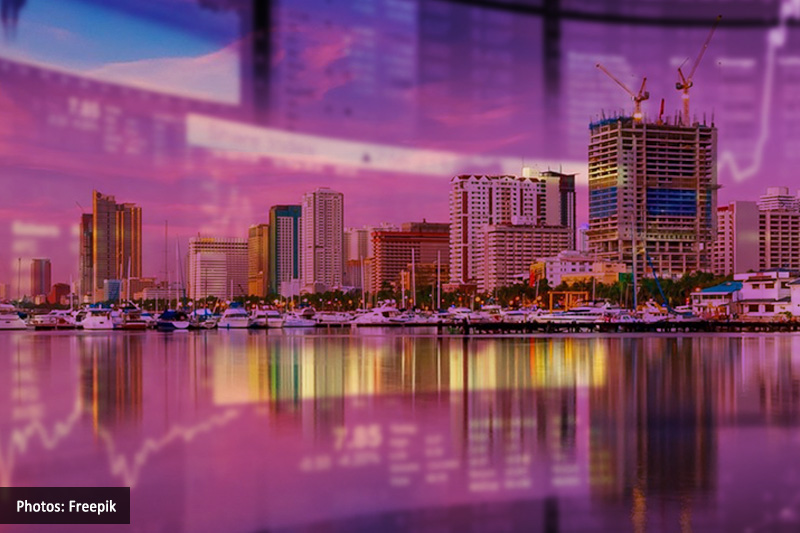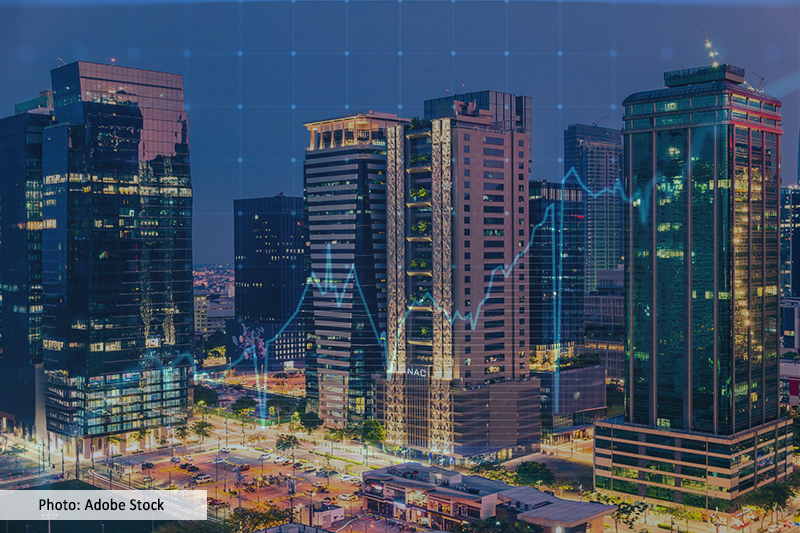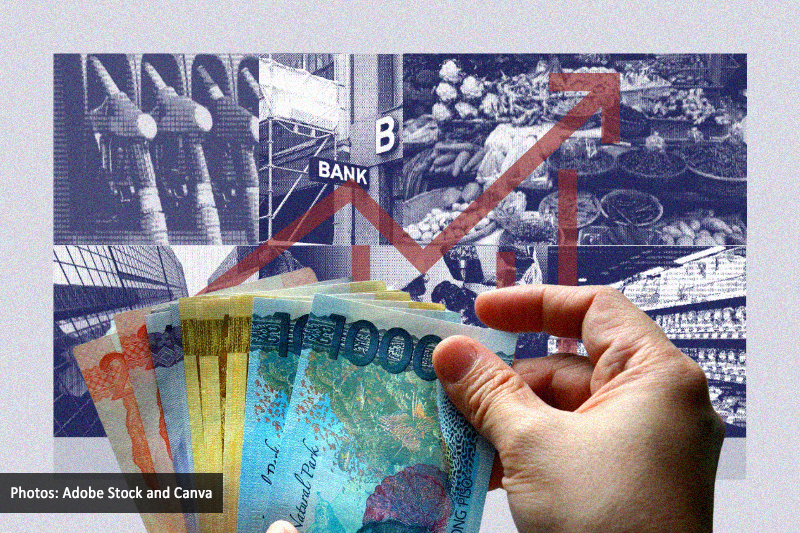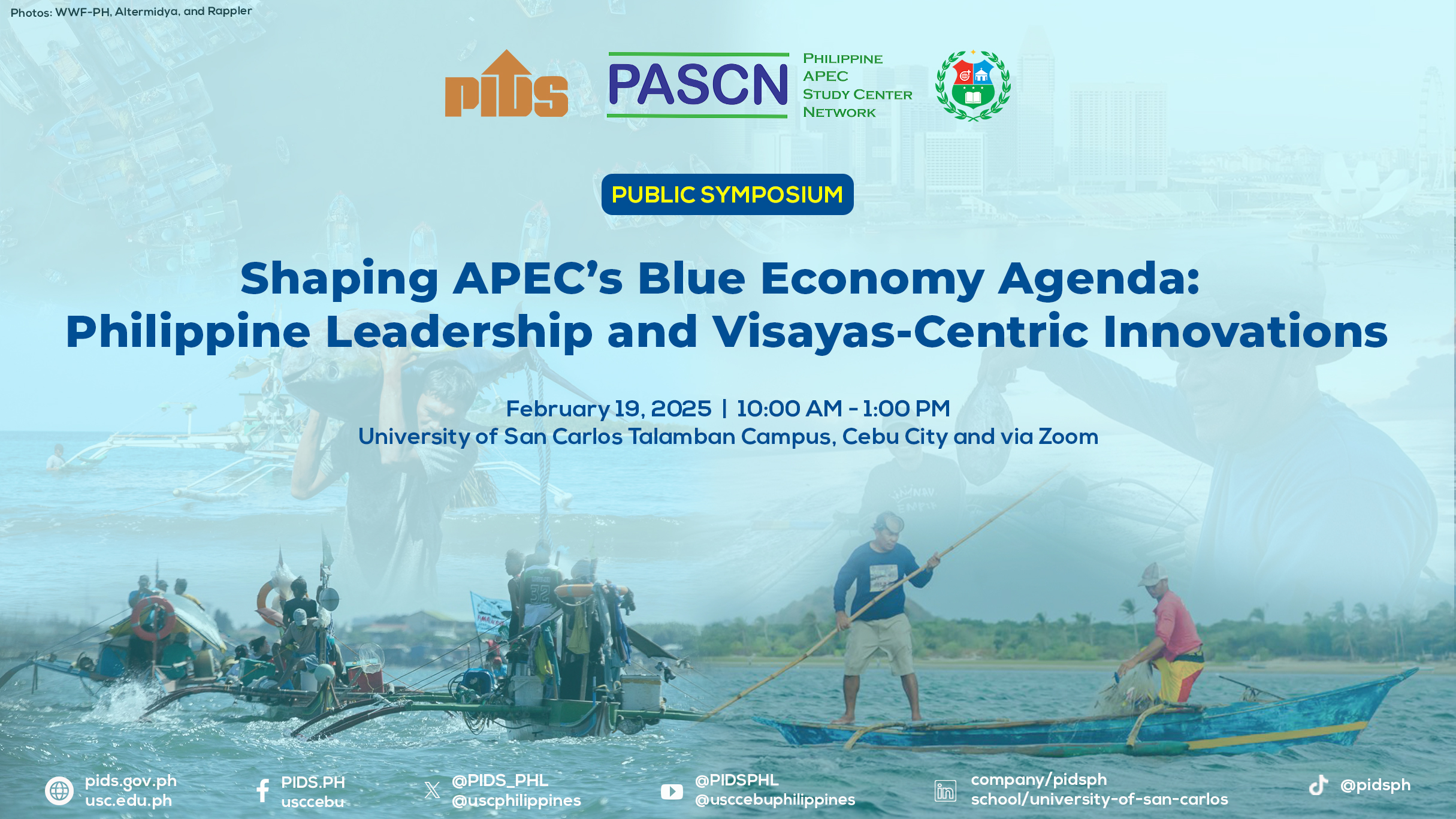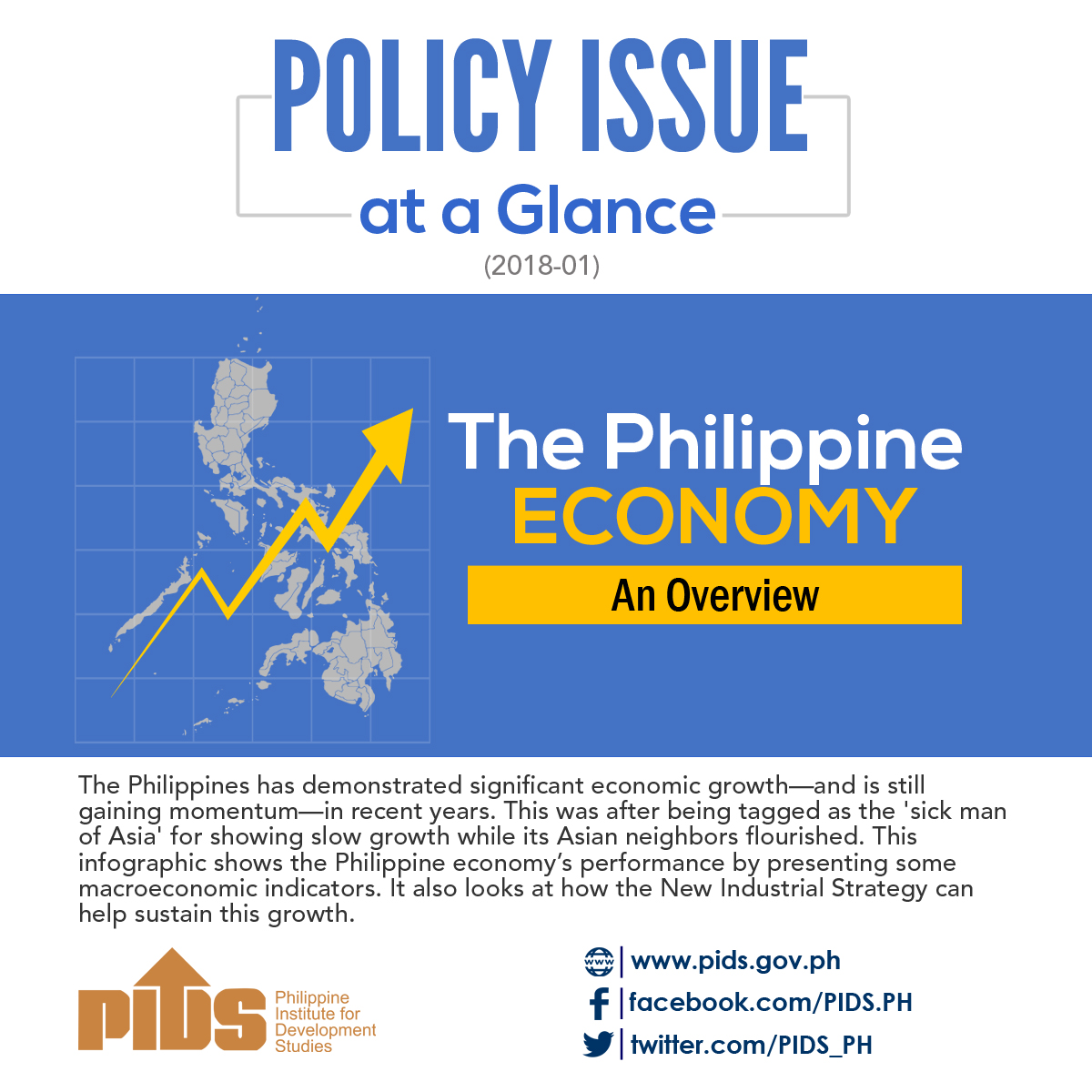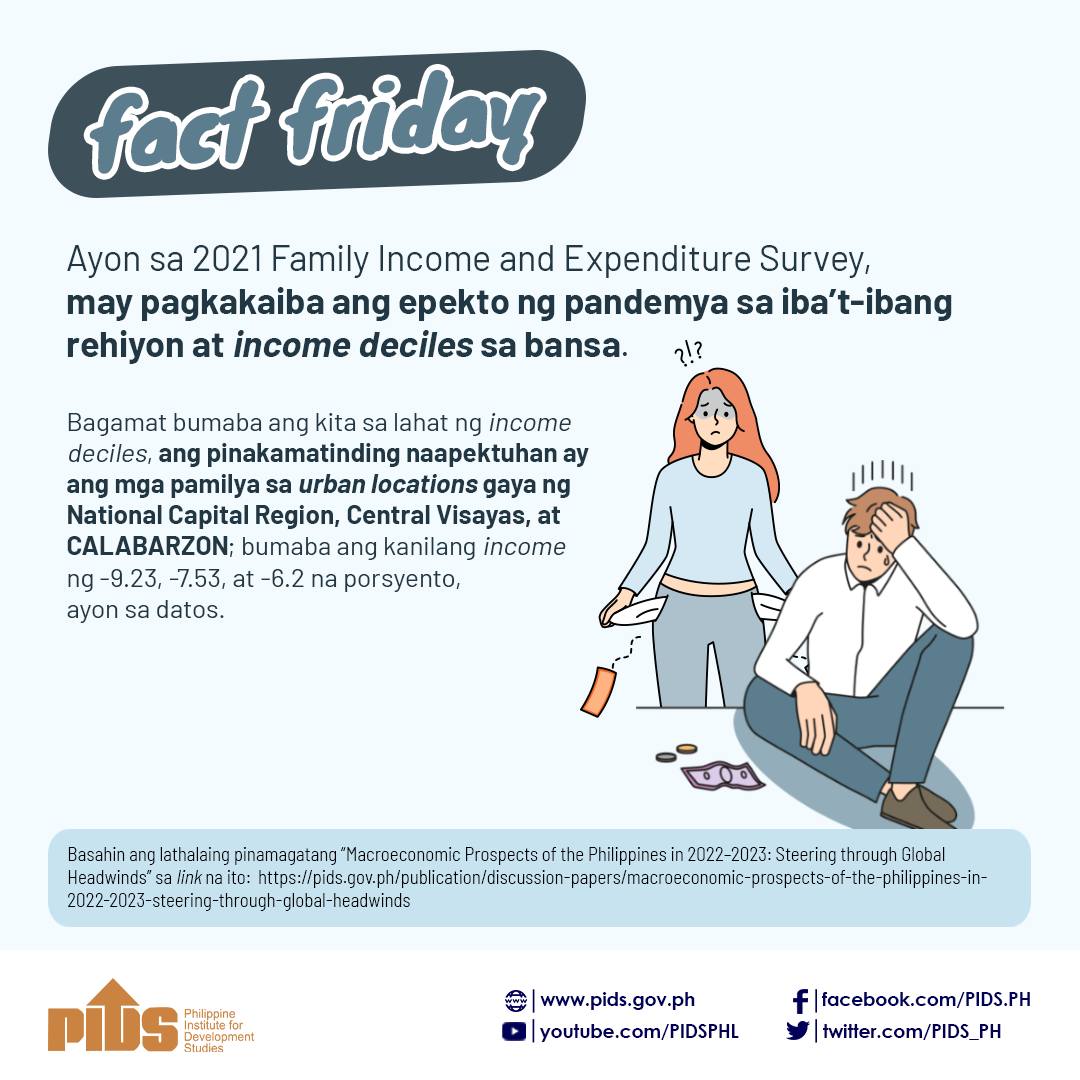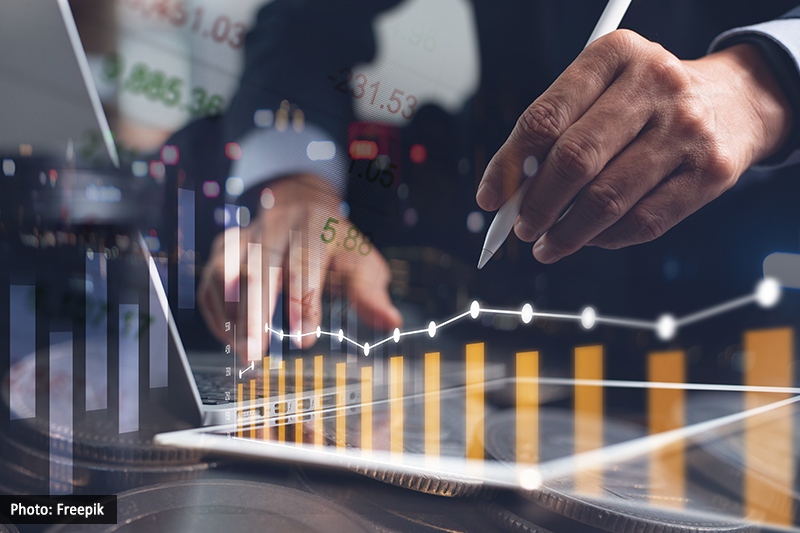
The Philippine economy is expected to continue growing in 2023 but at a slower rate due to global headwinds, according to experts from the government and private sector.
Department of Finance (DOF) Assistant Chief Economic Counselor Director Marites Oliva, Bank of the Philippine Islands (BPI) Economist Rafael Alfonso Manalili, and Philippine Chamber for Commerce and Industry (PCCI) Secretary-General Ruben Pascual shared a positive outlook for the Philippine economy at a webinar organized by the Philippine Institute for Development Studies (PIDS) recently.
The webinar featured the study “Macroeconomic Prospects of the Philippines in 2022-2023: Steering through Global Headwinds” by PIDS Senior Research Fellow Margarita Debuque-Gonzales, Supervising Research Specialist John Paul Corpus, and Research Analyst Ramona Maria Miral.
Oliva said the Philippine economy’s 7.6 percent growth in 2022 is better than the government’s Development Budget Coordination Committee assumption and market analysts’ and multilateral agencies’ projections.
She pointed out that all major production sectors grew last year, suggesting broad-based expansion despite increasing global and domestic commodity prices. The services sector registered the highest growth at 9.2 percent, followed by the industry and agriculture sectors, which grew at 6.7 and 0.5 percent, respectively.
“As we expect a gloomy world outlook this year, we will remain vigilant to ensure that the country will be resilient and on its path toward economic growth. The Bangko Sentral ng Pilipinas will take further tightening measures in early 2023 to curb elevated inflationary pressures,” she said.
Risks to inflation include high international food prices due to supply chain constraints and high fertilizer prices, trade restrictions, the impact of weather disturbances on agricultural stocks, and potential wage hikes.
Economist Manalili shared that BPI expects inflation to decrease gradually to 4.8 percent by the end of 2023 and the economy to grow by 5.4 percent, a “decent but slower increase” than in the previous years.
“Overall, the longer-term prospects of the economy are good. We believe it will continue to grow not just in 2023 but in the coming years because of the growth in our consumption, like house expenses, remittances, and business process outsourcing revenues. These growth drivers contracted during the pandemic but have now recovered,” Manalili said.
However, he appealed to the government and stakeholders to diversify the growth drivers. “We need to go beyond household consumption and services to recover faster and survive another pandemic if that happens. Diversifying our growth drivers allows us to grow even faster and protects us from external shocks such as the depreciation of the peso and the COVID-19 pandemic.” Manalili explained.
Pascual, who spoke on behalf of PCCI, recommended tapping the country’s rich natural resources and investing in “sunshine industries” such as salt and bamboo production, which could be new sources of economic growth.
On behalf of the business community, he urged the government “to use the lens not for the next five years but for [the] year 2050” and work together to become a first-world economy, a vision he claimed is shared by key economic and business institutions.
“Becoming a first-world economy is doable if only we can put our acts together. Our country has two distinct advantages: its rich natural resources and the demographic sweet spot, as we have one of the highest young working populations in the world. There are over 70 million Filipinos who are in the working age of between 25 and 70, and we have 800,000 graduates a year, mostly with bachelor’s degrees. We should harness our country’s natural and human resources,” he mused.
Watch the webinar at https://fb.watch/iKCdFafuA8 or https://youtu.be/aZaUKHS3efY.
For more videos of PIDS events, go to https://www.pids.gov.ph/videos. ###

